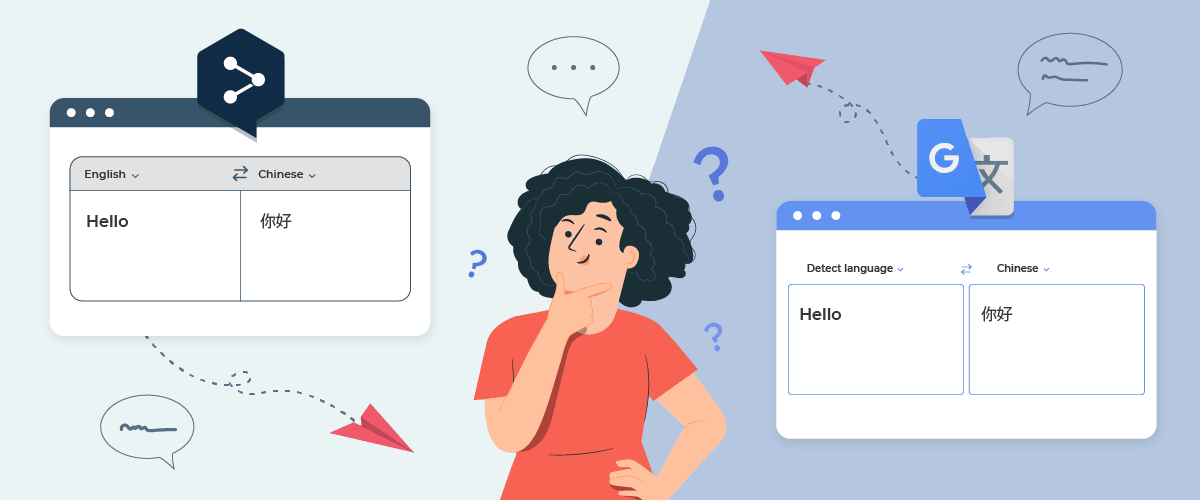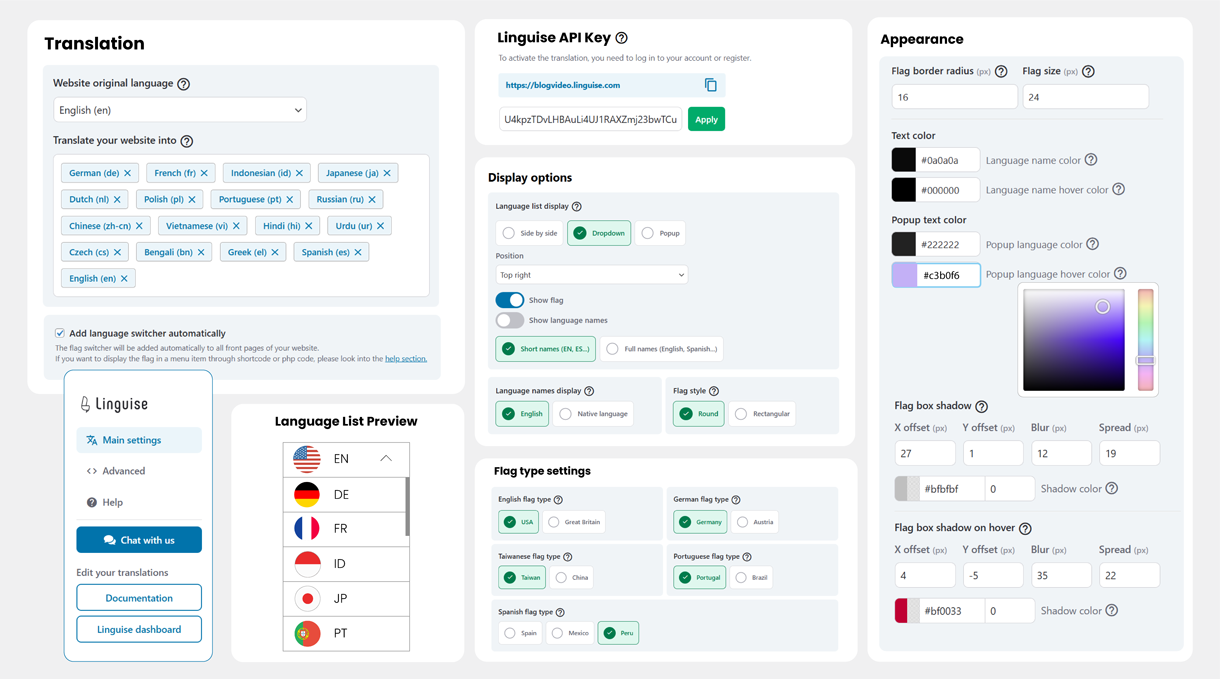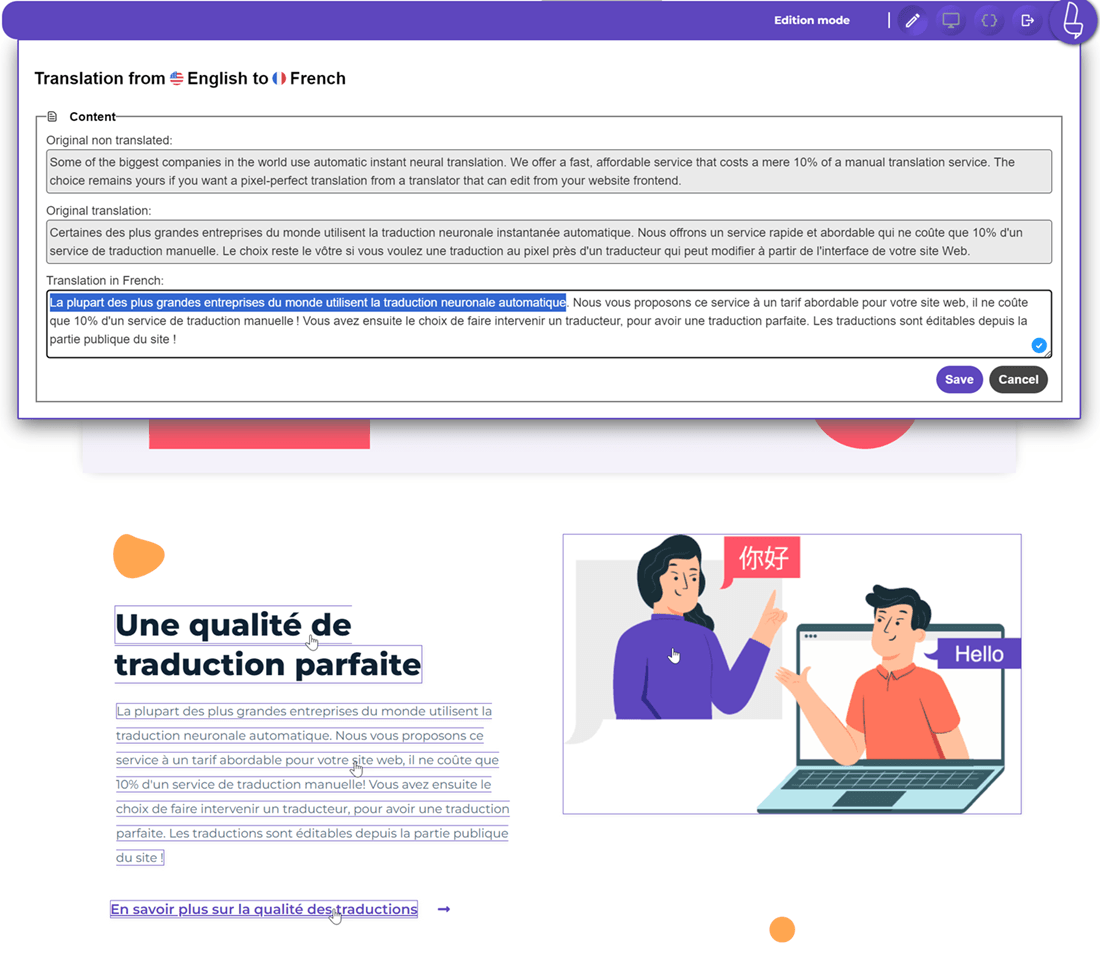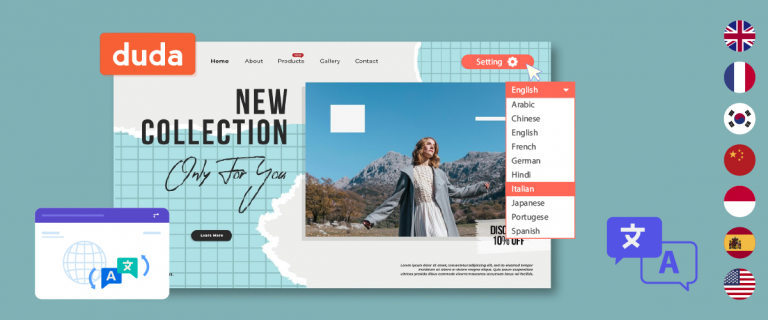Are you trying to decide between DeepL and Google Translate for your translation needs? Look no further for the ultimate comparison of these two popular machine translation tools. With the increasing demand for accurate translations, understanding the distinctions between these services is crucial, especially for daily needs and website translation.
We will explore features, language support, accuracy, pricing, user experience, and practical applications to ultimately help you determine which translation service best fits your requirements. Let’s dive in and uncover the strengths of DeepL and Google Translate!
DeepL and Google Translate: A brief overview
Before we compare the features and functionalities of DeepL and Google Translate, let’s take a moment to understand what these translation services are all about. Both DeepL and Google Translate utilize machine translation technology, a type of artificial intelligence developed to translate text from one language to another automatically.
DeepL
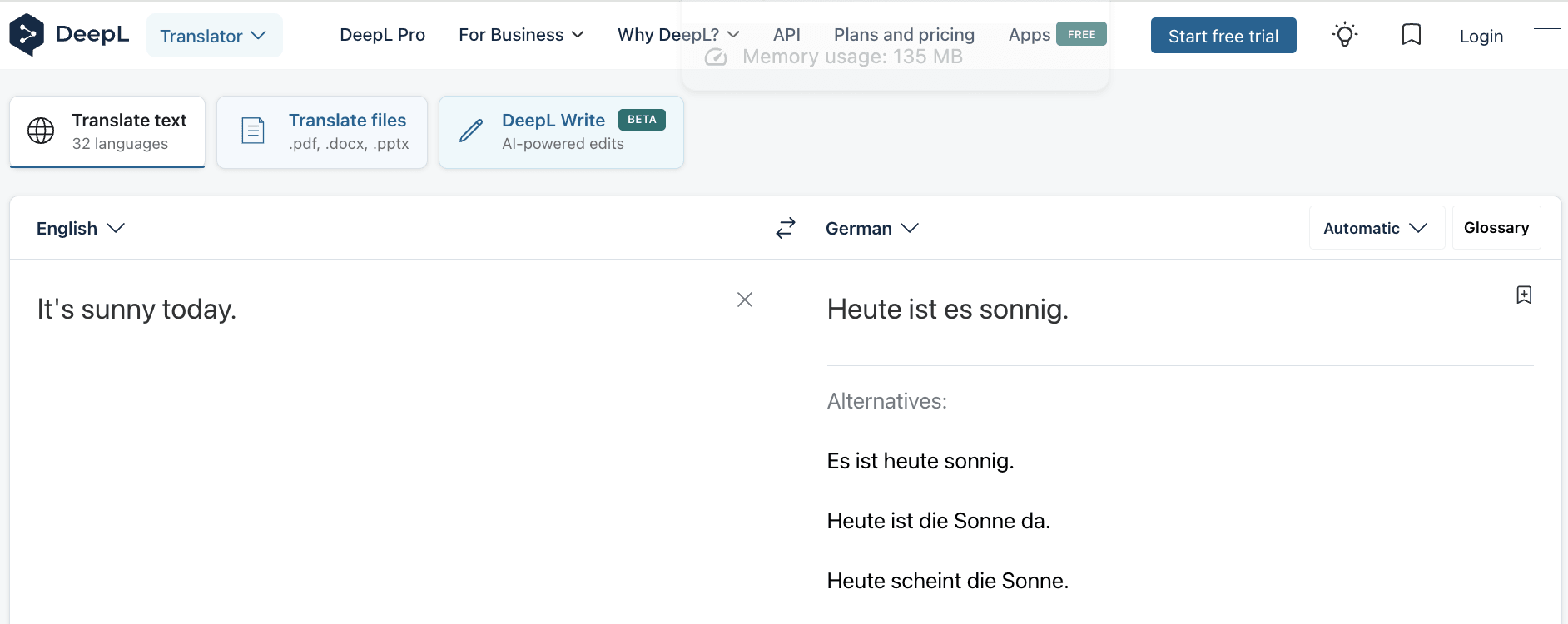
DeepL, known as DeepL Translator, is a translation service developed by DeepL GmbH, a German company founded in 2017. The team behind DeepL aimed to address the limitations of existing translation tools, which often struggled with accuracy and nuance. The technology behind DeepL was developed by a team of experienced professionals who worked on the popular online translation platform Linguee. With their expertise in neural machine translation, they set out to create a tool that would provide highly accurate translations, surpassing the capabilities of machine translation engines at the time.
The neural machine translation technology used by DeepL relies on artificial intelligence algorithms, which analyze vast amounts of training data to generate accurate translations. By learning from a wide range of language pairs, DeepL is able to capture subtle nuances and translate them in a way that is more akin to how human translators would render text. This focus on quality and accuracy has made DeepL a valuable tool for various industries, including professional translators, content creators, and language learners.
Google Translate

Google Translate, launched in 2006, is a free translation service offered by Google. Over the years, it has evolved to become one of the most widely used translation tools globally. Google Translate is powered by machine learning, a subset of artificial intelligence, and utilizes neural machine translation to provide translations across different languages.
With its origins in search engines, Google Translate harnesses the immense data available on the Internet to improve translation accuracy. Its development involved significant advancements in machine translation technology, allowing it to expand its language support and enhance the quality of translation. Today, Google Translate is one of the go-to tools for quick and easy translations, making it accessible to millions of users worldwide.
Language support: DeepL vs Google Translate

Supported languages on DeepL
DeepL initially launched with a focus on European languages but has since expanded its supported languages list. As of 2025, DeepL supports over 30 languages, covering major European languages like English, German, French, Spanish, Italian, Dutch, Polish, and Russian, along with select Asian languages such as Japanese, Chinese (Simplified), and Korean.
While its list remains smaller than Google Translate, DeepL prioritizes delivering highly accurate translations for supported languages, especially for professional, formal, or technical content. For everyday languages like Spanish, Chinese, Russian, or Portuguese, DeepL performs exceptionally well. However, DeepL does not yet offer translations for widely spoken languages like Hindi, Vietnamese, Hebrew, or Thai.
Supported languages on Google Translate
Google Translate, in contrast, offers support for most speaking languages in the world, aiming to bridge language barriers across the globe. It covers many languages, ranging from widely spoken languages like English, Spanish, French, German, Chinese, and Japanese to less common languages like Swahili, Mongolian, and Welsh.
Google Translate’s language support more than 130+ languages and it is continuously expanding, with additional languages being added to its translation services. Google’s commitment to language inclusivity ensures that users have access to translations in various languages, making it a valuable tool for individuals from different linguistic backgrounds.
“Which best? DeepL offers precise, high-quality translations for fewer languages, making it perfect for professional or detailed work where understanding nuances is key. Google Translate, with its wide range of languages, suits everyday translation needs for a broader audience. The choice between DeepL and Google Translate depends on your specific needs for accuracy, nuance, and language coverage.”
Accuracy in translation: DeepL vs Google Translate

How DeepL achieves precision in translation
DeepL’s precision stems from its advanced neural machine translation technology. By leveraging extensive data, DeepL excels in recognizing language nuances, ensuring contextually accurate translations. This dedication to precision distinguishes DeepL with the power of machine translation services. Its algorithms, trained on diverse language pairs, grasp the intricacies of languages, delivering translations that are not only accurate but also naturally fluent.
These findings from DeepL’s quality tests in 2020 highlight its best translation accuracy, underscoring its effectiveness and proficiency in machine translation. This assessment revealed that DeepL notably surpassed its competitors in translating between English and German, English and French, English and Spanish, and reverse translations.
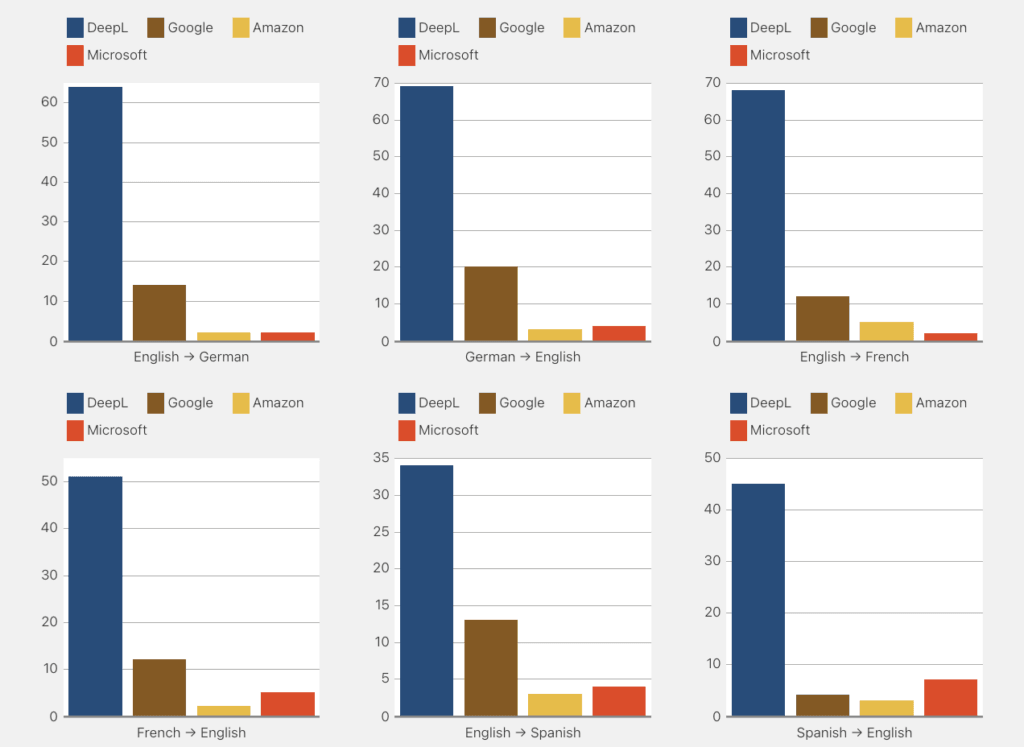
How Google Translate ensures accurate translations
Google Translate also relies on machine translation technology to provide accurate translations. Using neural machine translation, Google Translate has significantly improved its translation accuracy over the years. Google’s machine learning algorithms constantly learn from billions of language pairs available on the internet, allowing the system to provide more accurate, fluent, and contextually aware translations.
The accuracy of Google Translate is further enhanced by its ability to leverage artificial intelligence advancements in machine translation technology. Google has integrated various tools and features into its translation service to ensure accurate translations, catering to the needs of millions of users seeking translations in different languages.
“Which is best? DeepL and Google Translate both provide accurate translations using advanced technology. DeepL best delivers precise translations with understanding of language nuances. On the other hand, Google Translate covers a wide array of languages and adapts well to various texts with vast database, making it suitable for everyday translations.”
Website translation focus: DeepL vs Google Translate

DeepL for website translation
DeepL is widely recognized for delivering highly accurate, natural-sounding translations, making it ideal for websites where tone, context, and linguistic precision are essential. Its translation technology effectively captures subtle nuances, ensuring your website content reads fluently and professionally, especially for business, legal, academic, or technical sites. DeepL works particularly well for European languages such as English, German, French, Spanish, and Italian, providing quality translations suitable for websites targeting these markets.
Although DeepL supports fewer languages, its superior handling of formal and industry-specific language makes it a strong choice for companies prioritizing polished, human-like translations over broad language coverage. DeepL also integrates with platforms like WordPress and offers API access, allowing website owners and developers to manage multilingual content with greater control and precision.
Google Translate for website translation
Google Translate offers extensive language coverage, supporting over 100 languages, which makes it highly suitable for global websites targeting diverse audiences. Its translation engine is powered by vast data resources and machine learning, enabling users to translate large amounts of website content quickly and at scale. Google Translate is particularly useful for informational or general-purpose websites, eCommerce platforms, and blogs where broad accessibility matters more than deep linguistic nuance.
Additionally, Google Translate provides integrations with popular platforms such as WordPress, Shopify, and other CMS tools, allowing for easy website translation setup. For many businesses, Google Translate is a fast, affordable solution to break down language barriers. However, its translations may sometimes lack the refined quality that DeepL offers for specific content types.
“Which best? DeepL provides highly accurate, natural translations ideal for websites where tone, context, and precision matter most—perfect for professional, corporate, or technical content. With its wide language coverage and easy integration, Google Translate is well-suited for general websites, blogs, or eCommerce platforms targeting diverse international audiences. The choice depends on your website’s goals: prioritize DeepL for quality and nuance, or Google Translate for scale and accessibility. “
DeepL and Google Translate: Pricing model

Pricing plans for DeepL
DeepL offers flexible and affordable pricing plans to meet different translation needs. Its clear pricing allows you to know the costs upfront. For API access, there’s a $5.49 monthly flat rate (free under 500,000 characters). Beyond that, it’s $25 per million characters, about 25% more than Google Translate.
DeepL also provides a premium web and desktop app for individuals, starting at $6.99 per month, which includes unlimited text translation and up to five 10MB file translations monthly (API access requires separate fees).
Pricing plans for Google Translate
Google Translate offers cost-effective pricing plans, including a free version of its service. This accessibility makes Google Translate a popular choice for individuals seeking quick translations. The free version allows users to translate text instantly without any additional cost, making it ideal for personal use or basic translations. With the Google Translate API, you pay strictly based on your usage. After your first 500,000 characters each month, you’ll pay $25 per million characters.
For more advanced features and capabilities, Google offers additional pricing options through Google Cloud Translation, accommodating the needs of businesses and organizations. These features include translation services for websites, mobile apps, and additional support options. Google Translate’s pricing is designed to cater to a wide range of users, ensuring affordability while providing quality translations.
“Which best? If you prioritize translation quality, nuanced understanding, and specialized features for professional translation work, DeepL might be the better choice, despite being slightly more expensive.
If your focus is on cost-effectiveness, a wide range of languages, and general translation needs, Google Translate offers a compelling service that’s hard to beat in terms of affordability and accessibility.”
Features: DeepL vs Google Translate

Unique features of Google Translate
Google Translate has a variety of features that make it popular worldwide. Here are some of its unique features:
- Integration with various platforms: Google Translate seamlessly integrates with various platforms, making it accessible to users across different devices and services. Whether using WordPress, TranslatePress, or any other supported platform, Google Translate offers easy integration options, allowing you to translate web pages instantly and effortlessly.
- Wide language support: One of the most significant advantages of Google Translate is its extensive language support. It covers many languages, both widely spoken and less common, making it a versatile tool for translation needs. With Google Translate, you can translate text from English, Spanish, French, German, Chinese, Japanese, Korean, and many more.
- Mobile apps for translation on the go: Google Translate provides mobile apps for iOS and Android, empowering users to access translations on their smartphones or tablets. These apps offer a user-friendly interface, allowing you to type or speak text for translation and even translate text in images through the camera functionality. With Google Translate’s mobile apps, language barriers can be overcome anytime, anywhere.
- Enhanced translation accuracy: Over time, Google Translate has significantly improved its translation accuracy, thanks to advancements in machine translation technology and data analysis. Google’s machine learning algorithms continuously learn from billions of language pairs, enabling the service to provide more accurate translations with increased fluency and contextual understanding.
- Free version available: Google Translate offers a free version of its service, making it accessible to users who may have more basic translation needs. This is particularly useful for individuals who require quick translations for personal use, such as understanding foreign text on websites, emails, or social media.
Unique features of DeepL
DeepL offers several unique features that stand out among machine translation services. Here are some key features of DeepL:
- Accurate translations: One of DeepL’s major distinctions is its translation accuracy. Thanks to its neural machine translation technology, DeepL can provide highly accurate translations, capturing nuances and delivering quality results. Whether it’s translating complex sentences or rendering subtle language nuances, DeepL excels in providing translations that are closer to human-like quality.
- Language support: While DeepL supports fewer languages compared to Google Translate, it focuses on providing accurate translations for major European languages, including English, Spanish, French, German, Italian, Dutch, and Polish, among others. This language support caters to a diverse user base, particularly those seeking translations in European languages.
- Translation quality: DeepL is renowned for its translation quality, which users consistently favor. Its machine learning algorithms, combined with extensive training data, enable the service to produce translations that are reliable, fluent, and contextually accurate. DeepL is an ideal choice for professional translations, academic research, and any situation where precision is paramount.
- Advanced translation management system: DeepL offers a system that allows teams to collaborate efficiently on translation projects. This system and powerful workflow features simplify the translation process, ensuring consistency and accuracy across multiple team members. Whether it’s a small team or a large-scale translation project, DeepL’s translation management system provides valuable tools for streamlining translation workflows.
“Which best? The “winner” between DeepL and Google Translate depends on the user’s requirements. For precision and quality in translations, particularly for European languages, DeepL is a clear choice. Its focus on delivering human-like translation accuracy and its features tailored for professional use give it an edge for users who prioritize quality over quantity. For general accessibility, a wide range of language options, and versatile use, Google Translate takes the lead. Its extensive language support, ease of integration, and free access make it ideal for casual users, travelers, and anyone who needs quick translations across numerous languages.
Comparing DeepL and Google translate in daily situations
When we look at DeepL and Google Translate for everyday use, we see that they’re good at different things. DeepL is best at providing natural and accurate translations, almost like what a human translator would produce. This makes it ideal for work or school projects where accuracy is crucial. It’s especially useful for critical documents that need to be precise, such as legal documents or medical information.
Google Translate, on the other hand, is incredibly handy for quick translations of simple content. Whether you’re browsing websites in another language, chatting with friends from around the world, or just need to grasp the gist of something, Google Translate is there for you. It supports a wide range of languages, making it highly accessible to everyone.
However, both DeepL and Google Translate are continuously improving. They’re learning from an increasing number of translations, which means their accuracy is constantly getting better. For translating a website, we recommend using a translation solution that leverages various machine translation technologies to deliver the best possible translation for each specific case, regardless of the technology. If you’re looking to translate your website using machine translation, Linguise offers the ideal solution.
FAQ: DeepL vs Google Translate?

To wrap up our DeepL vs Google Translate comparison, here are some frequently asked questions to help you decide which translation service is right for your website or daily needs.
What makes DeepL different from Google Translate?
DeepL stands out because it emphasizes translation quality, context awareness, and human-like fluency, especially for formal or technical content. Google Translate, on the other hand, focuses on language inclusivity, offering translation for over 100 languages and convenient tools like mobile apps, browser extensions, and real-time website translation.
Is DeepL more accurate than Google?
Yes, DeepL generally provides more natural and accurate translations for the languages it supports, making it ideal for professional use, formal documents, and websites where tone matters. Google Translate has improved significantly, but may lack nuance in certain language pairs. If you need broader language coverage, Google Translate remains a strong option.
Is DeepL Translate actually accurate?
DeepL is widely regarded as one of the most accurate machine translation services, particularly for European languages. Its advanced neural machine translation ensures highly natural, human-like translations. However, DeepL’s language range is more limited than Google Translate’s.
Can you use Google Translate and DeepL to translate a website?
Yes, both services offer API access for website translation. You can integrate them using platforms like Linguise or custom-built solutions. This allows website owners to provide multilingual content efficiently.
Choosing the most effective machine translation for your business
Choosing the best machine translation service for your business involves considering various factors, including accuracy, language support, additional features, pricing, and user experience. While DeepL and Google Translate offer valuable machine translation services, other tools and platforms can also support different translation needs, such as Linguise.
Linguise is an AI automatic translation service that uses AI Machine Translation technology to translate text from one language to another, ensures high-quality website translations, achieving high accuracy.
Support integration with major CMS platforms such as WordPress, Joomla, Drupal, and more. This allows website owners using these platforms to easily add multi-language support without requiring manual translation efforts.
Admin dashboard with easy setting - no coding required!
Linguise is incredibly user-friendly, making it accessible to individuals and businesses alike. Whether you’re a beginner or an experienced webmaster, integrating Linguise into your website is straightforward.
A front-end live editor for on-the-spot adjustments.
Beyond automatic translation, Linguise includes a front-end live editing tool that enables direct modification of translation outcomes on the website’s front page. This convenient functionality is easily accessible through the Linguise dashboard.
Optimize your international SEO
Linguise simplifies the process of multilingual SEO by following search engine guidelines closely. It automatically creates alternate URLs and applies language tags accurately, including the hreflang tags. This eliminates the need for you to manually setting details for multilingual SEO, as it’s all taken care of. By optimizing your website for search engines in every language, Linguise boosts your online presence and expands your reach to various international markets.
Conclusion
Choosing between DeepL vs Google Translate largely depends on your specific needs. DeepL remains the superior choice for translations that require high accuracy, precise language nuances, and more natural results, especially for European languages. On the other hand, Google Translate offers a much wider range of languages, easy integration, and more affordable costs for large-scale or everyday use.
However, if you’re looking for a practical solution to automatically translate entire websites without the hassle of coding, Linguise is the best alternative. Linguise utilizes a combination of leading AI technologies, including DeepL and Google Translate, to deliver high-quality translations right on your website. Get a multilingual website in minutes-try Linguise and expand your business’ global reach!

